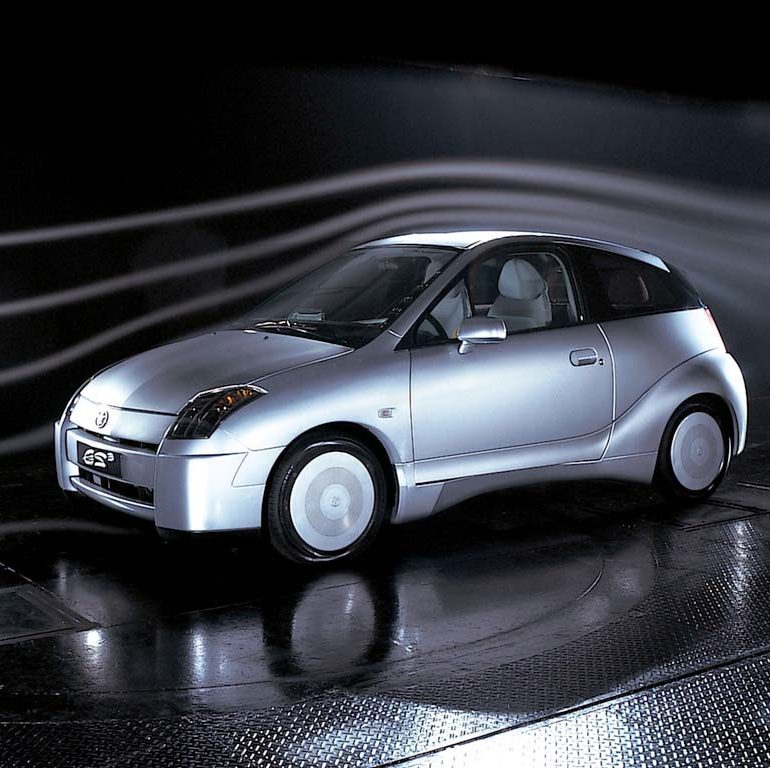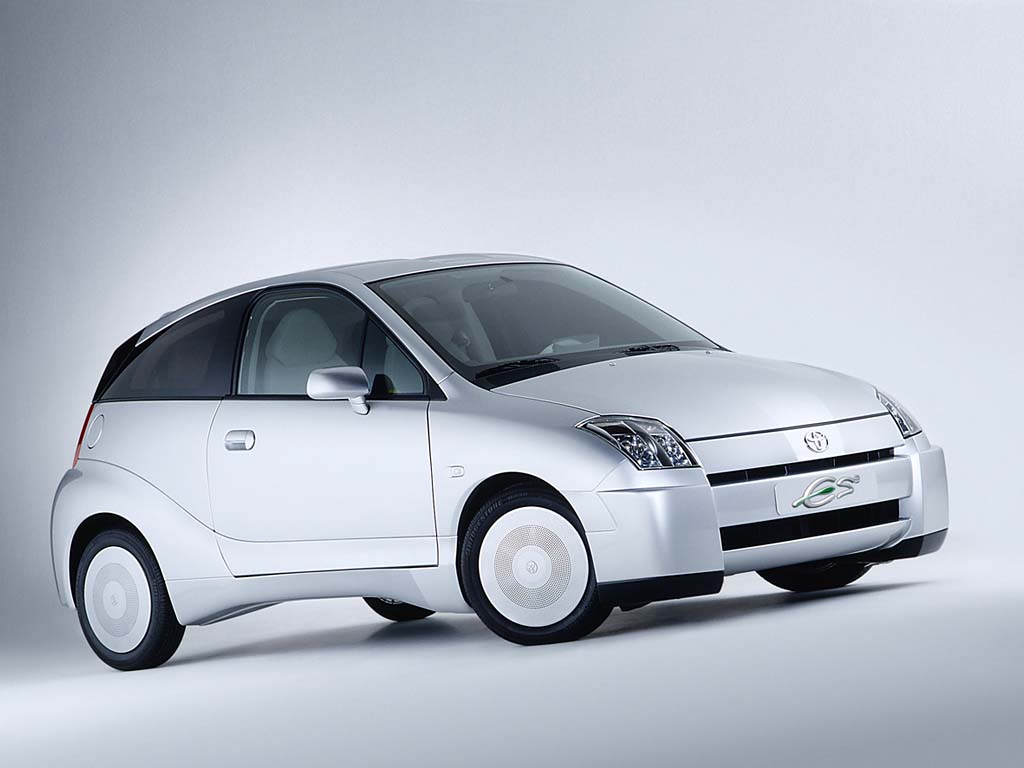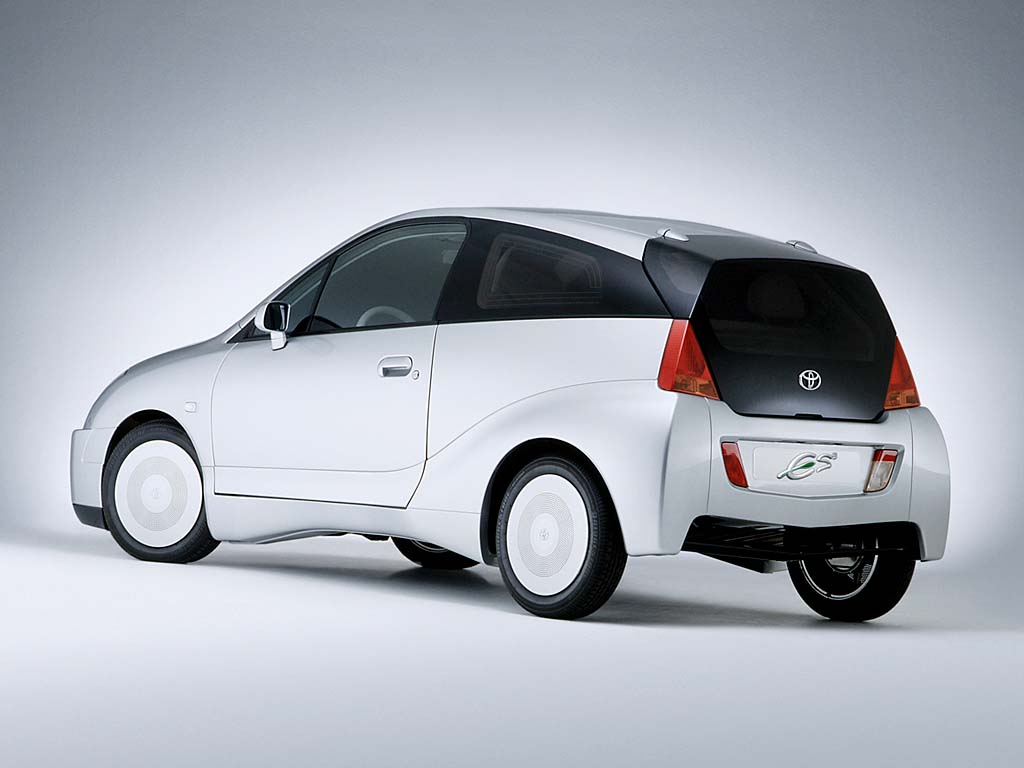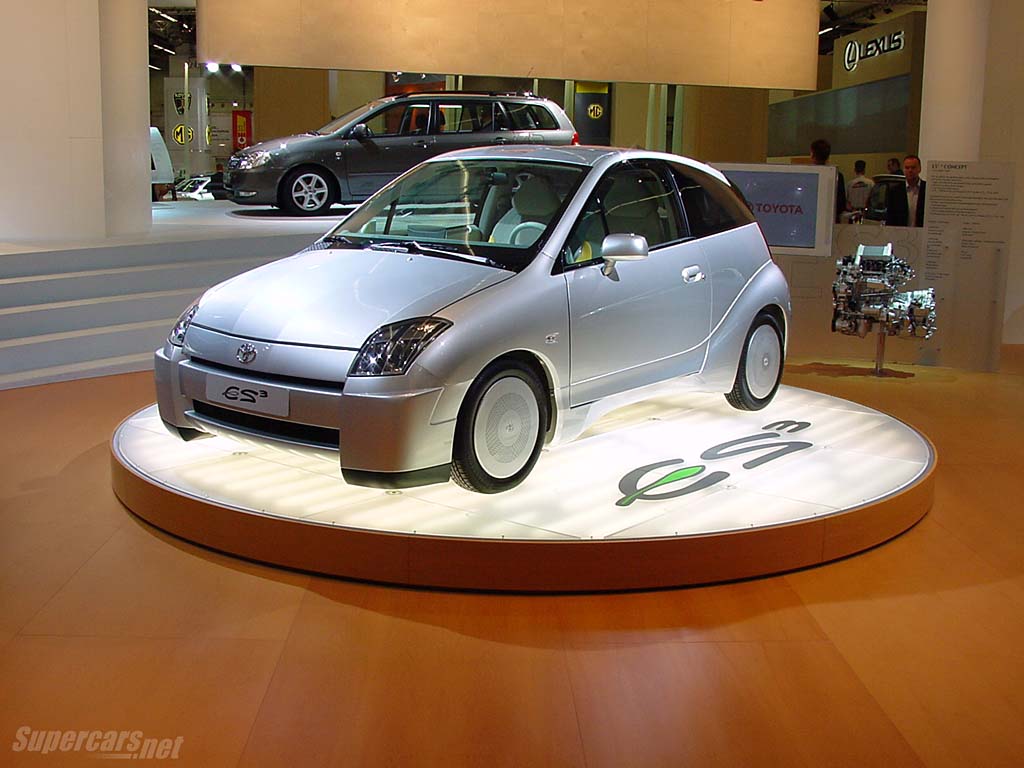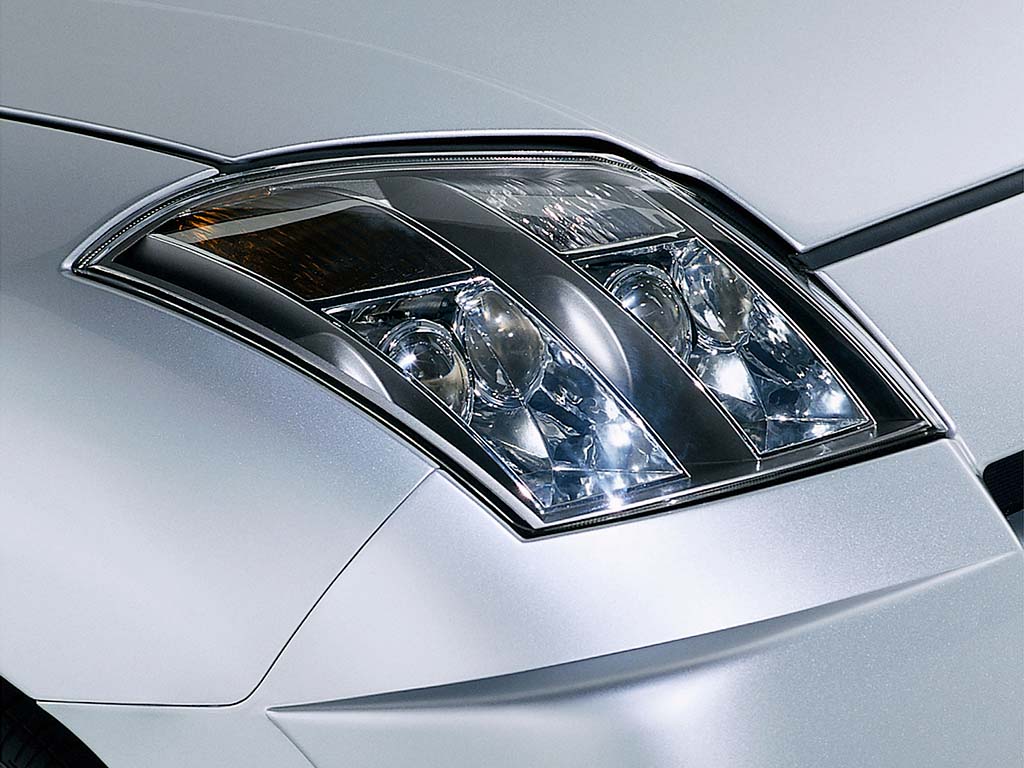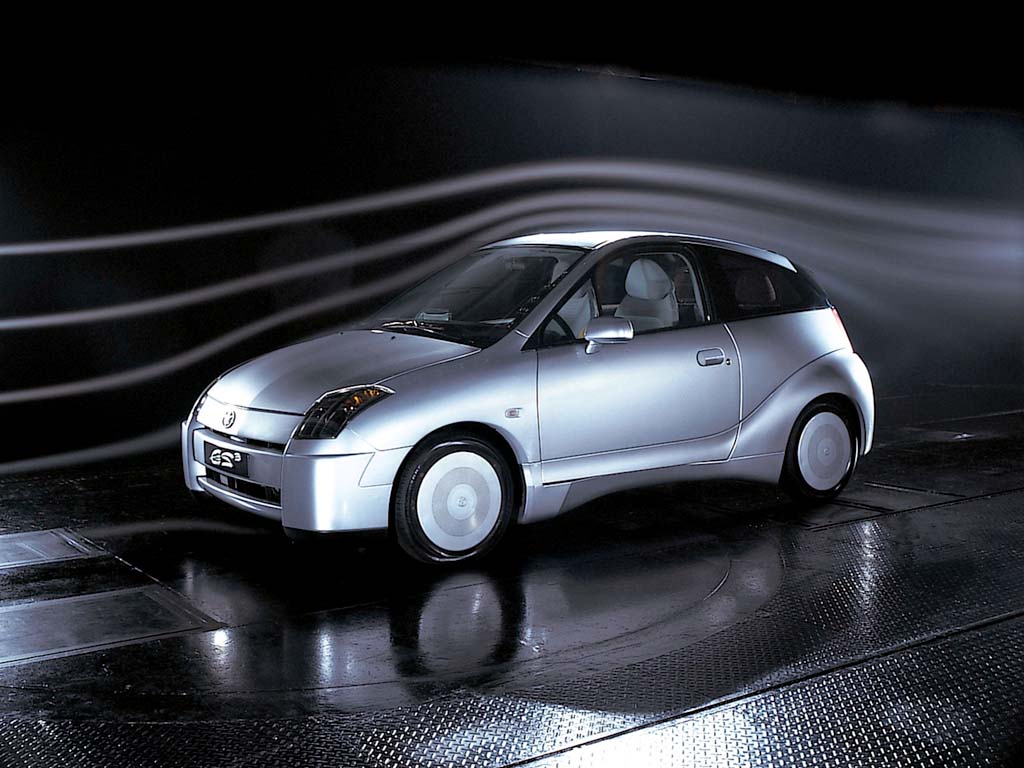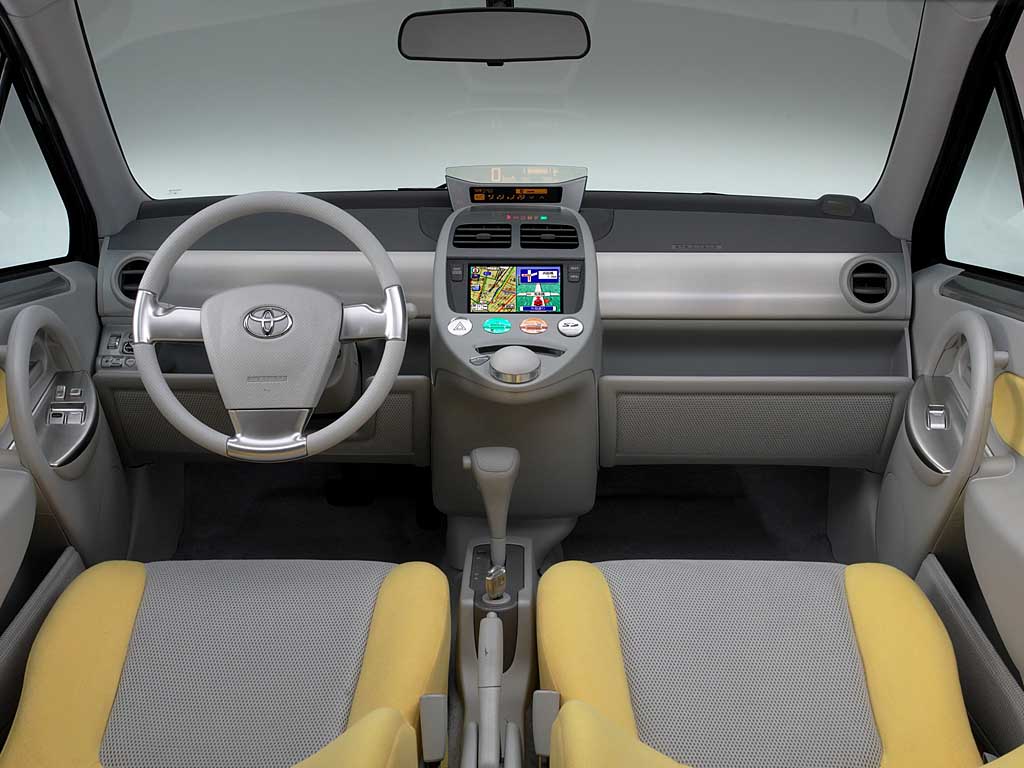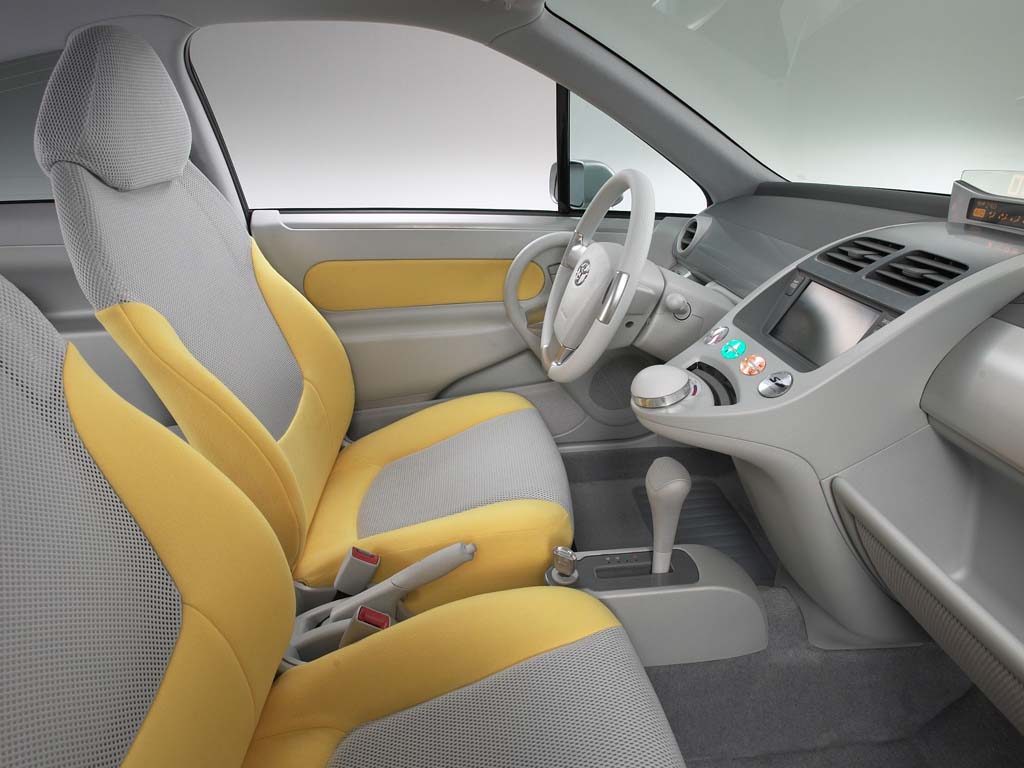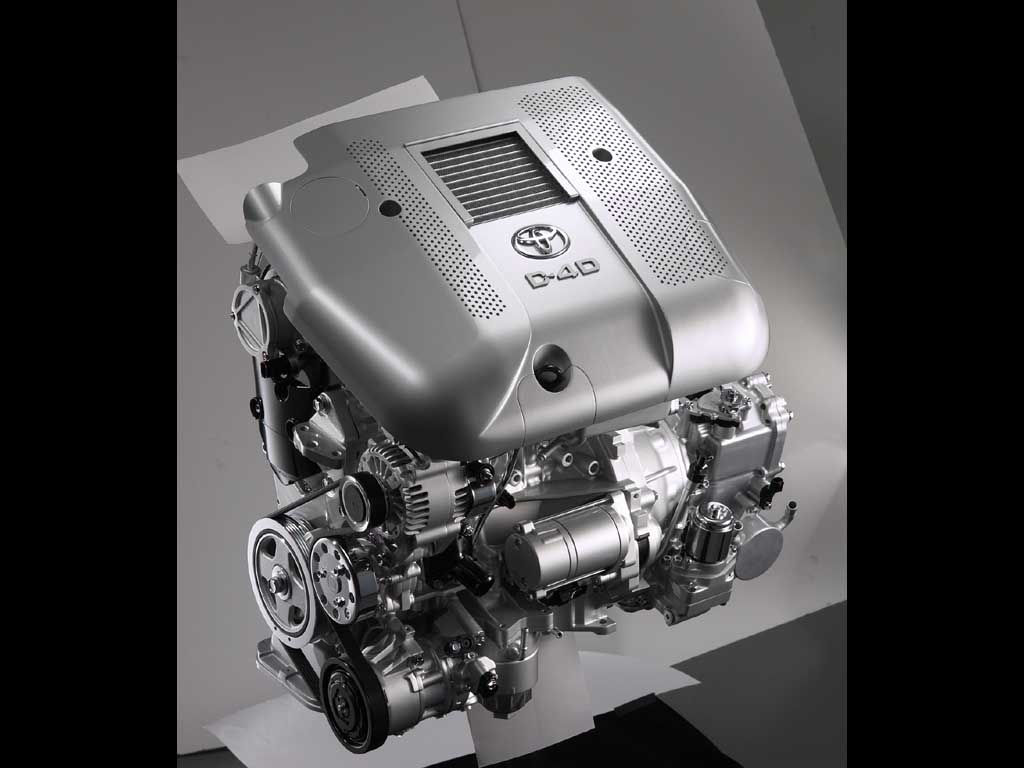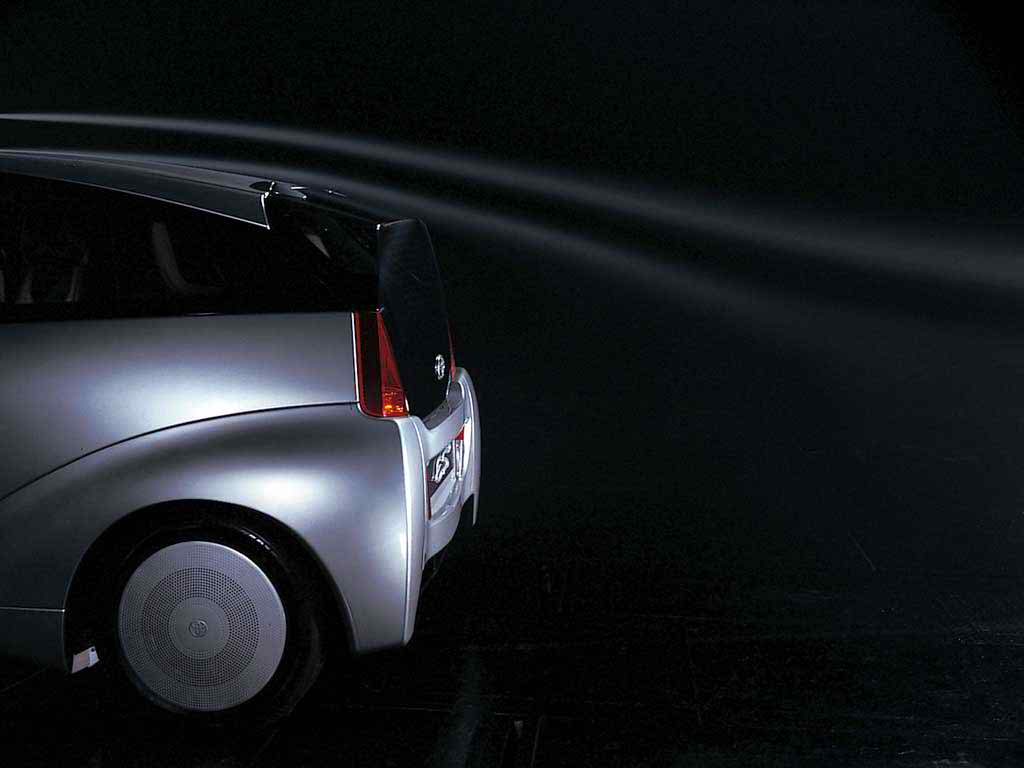2001 Toyota ES3 Concept
The ES3 (Eco Spirit Cubic) showcases Toyota’s drive towards an economic drive train combined with a reduced curb weight. This advanced concept has a combined fuel economy of 87mpg (37km / liter). The key to the outstanding fuel economy is a highly efficient engine combined with a light aerodynamic body. The ES3 uses a 1.4 liter, common-rail direct injection engine with a turbocharger and change-air intercooler mated to a continously variable transmission (CVT).
The engine is mated to a newly developed continously variable transmission. With a torque converter, the transmission contributes to the ES3’s class leading fuel economy.The torque converter is equipped with a lock-up torsional damper that has a wide range of effective angles. Such variable ratios enable the concept to maximize fuel efficientcy.
A Stop and Go powertrain management system turns the engine off when the vehicle is stationary and provides instant restart.
The ES3 also employs a regenerative braking system. This technology converts deceleration energy into electric energy for storage in a capacitor. The stored electric energy is used for auxiliary electric loads and engine restarts. This reduces engine workload to power electric devices, thus, providing further reduction in fuel consumption.
The kerb weight of just 700kgs is achieved through the use of a strong, but light, aluminium body with plastic outer panels. These plastic panels include the bumpers, side panels of the front and rear fenders, rear window surround, radiator support, fuel tank and rear boot floor. Further weight reduction is achieved by intelligent design of interior components, such as the instrument panel and heater modules. Front seat frames are made of magnesium alloy and seat cushion weight has been reduced.
All aspects of recycling of recycling were taken into consideration while devloping the ES3. Materials like Super Olefin Polymer were used on the bumpers and outer panels. This material has great recylability.
The ES3 shows Toyotas comitment to devloping practical, intelligent solutions to reducing global emissions. Toyota is still compaigning the ES3 at various motorshows worldwide. It was first launched at the 2001 Frankfurt Motor Show.
In Detail
| submitted by | Richard Owen |
| engine | 1ND-TV, Aluminum Alloy, Diesel Inline-4 |
| displacement | 1364 cc / 83.2 in³ |
| bore | 73 mm / 2.87 in |
| stroke | 81.5 mm / 3.21 in |
| bhp/weight | bhp per tonne |
| body / frame | Aluminum & Plastic |
| driven wheels | FWD |
| front tires | 145/70R15 low-friction |
| rear tires | 145/70R15 low-friction |
| front brakes | Discs w/Aluminum Calipers, Regenerative System |
| f brake size | mm / in |
| rear brakes | Discs w/Aluminum Calipers, Regenerative System |
| r brake size | mm / in |
| steering | Rack & Pinion w/Speed Sensitive Assist |
| f suspension | MacPherson Struts w/Lower Arms, Stabilizer Bar |
| r suspension | Torsion Beam |
| curb weight | 700 kg / 1543 lbs |
| wheelbase | 2310 mm / 90.9 in |
| front track | 1450 mm / 57.1 in |
| rear track | 1400 mm / 55.1 in |
| length | 3520 mm / 138.6 in |
| width | 1630 mm / 64.2 in |
| height | 1460 mm / 57.5 in |
| transmission | CVT w/ Lockup Torque Converter |
| gear ratios | :1 |


